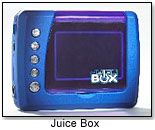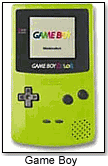
January 1, 2026


Dan Steere is the vice president of marketing at Matrix Semiconductor
In the coming year, toy makers will begin to deliver more multimedia and interactivity at price points appropriate for mass-market toys. The key to making sure this trend continues: large amounts of inexpensive memory to store music, video, games and programming code.
Fragile hard disk drives and scratch-prone CDs have one thing in common - they are both completely incompatible with the usage they will receive from kids. So-called “solid-state” media - data storage that doesn’t use moving parts - offers durability and price points that toy manufacturers can accept.
Until recently, this solid-state memory for data storage came in two principal forms: flash memory and mask ROM. Flash memory offers extreme flexibility in terms of its ability to be programmed and reprogrammed, though it remains expensive. Mask ROM is far less expensive and a popular choice for toys, but decidedly inflexible - turning around a Mask-ROM-published content title can take months.
Owing to a breakthrough in chip design and manufacturing (building chips in three dimensions), Matrix Semiconductor of Santa Clara, Calif. has produced a memory that offers the low cost of Mask ROM with the added flexibility of one-time programmability and quick time-to-market for content publishing. The result is Matrix 3-D Memory.
High Tech Toys
In 2004, Matrix Semiconductor earned the opportunity to work with toy industry giant Mattel on a handheld personal media player designed for “tweens.” Dubbed the “Juice Box,” the lightweight player features a three-inch, full-color screen and a design that is both simple and durable. Video titles are pre-recorded and distributed on solid-state “Juiceware”  cartridges.
cartridges.
Mattel had the choice of either using a drive-based system or durable solid-state media. Choosing the former would have meant that the Juice Box™ could have distributed music and video on inexpensive proprietary CD’s - a tempting marketing prospect mimicking conventional CD and DVD distribution.
Mattel instead chose solid-state media - Matrix® 3-D Memory from Matrix Semiconductor - and, in so doing, demonstrated an approach that combined the most amount of fun in the smallest and least-expensive package.
Here’s why:
Cost:
Disk technology would have added either $8 - $10 for a CD drive or up to $60 - $100 for a hard drive to the bill-of-materials. By choosing solid-state memory to publish interactive content on a removable cartridge, Mattel was able to invest in a larger screen and faster processor, and still meet it’s targeted $69.99 MSRP, keeping the player in the critical price range.
Usage Model:  Mattel understood that if they used a hard disk drive tweens would have to dock their players to PCs in order to move content in and out of the device, a user experience that doesn’t fit much of the target market. CDs, while removable, are not as portable. Small solid-state cartridges provided the ideal usage model as proven by the popularity of the Nintendo Game Boy and other interactive toys.
Mattel understood that if they used a hard disk drive tweens would have to dock their players to PCs in order to move content in and out of the device, a user experience that doesn’t fit much of the target market. CDs, while removable, are not as portable. Small solid-state cartridges provided the ideal usage model as proven by the popularity of the Nintendo Game Boy and other interactive toys.
Media:
In a hard disk drive, the media and the host device are linked - damage to the former means a catastrophic failure in the latter. For CDs, the data-retaining surface is exposed to scratching and staining – likely to happen in a middle schooler’s book bag. By using solid-state removable cartridges, the media exists in an enclosed, truly tween-friendly, form.
Size and Weight:
Solid-state media shaved the bulk by more than half of disk- or CD-based designs.
Security:
CD-based content can be counterfeited more easily by rogue replicators or PC “ripping” and allow much less parental control of content than cartridges.
Formerly a specialty technology, solid-state media is now an affordable, mainstream choice for toy designers. This holds the possibility of re-inventing older product types and creating entirely new categories of entertainment and educational products with a faster time to market and mass-market price points.
Copyright © 2026 TDmonthly®, a division of TOYDIRECTORY.com®,
Inc.